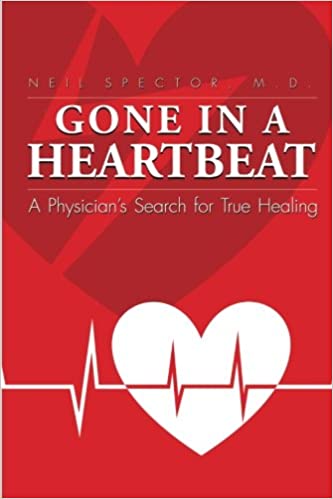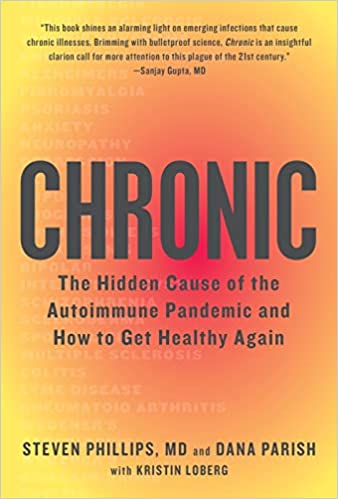Lyme Disease, Why The Stigma?
By Dr. Susan Eisen
Here we sit just out of the fastest moving pandemic this modern world has ever seen. Suddenly, we have all become acutely aware of our immune systems because a healthy immune system can combat coronavirus, but an unhealthy compromised immune system can make one vulnerable to serious life-threatening complications. As the COVID-19 pandemic spread globally, we all experienced what it is like for someone with a compromised immune system to live on a day-to-day basis: the self-quarantine, the social distancing, the extensive sanitization and the extra immune boosting vitamins. Enter the secondary immune compromising illness of Lyme Disease, and the fear-based stigma that prevents diagnosis and you have makings of a major disaster. With around reported 500,000 cases yearly, there are more cases of Lyme disease than heart disease, breast cancer and HIV combined! The Centers for Disease Control and Prevention has labeled Lyme disease as the third most common infectious disease in the United States behind only food borne and respiratory infections. Yet there are tens of thousands more estimated undiagnosed cases nationwide, a product of the stigma carried with Lyme. With a pandemic now affecting deficient or compromised immune systems, the scale of COVID-19 is one of the worst things possible for those with Lyme and any of us who may unknowingly be affected with Lyme Disease.
Lyme disease, or borreliosis, is caused by the bacterium Borrelia burgdorferi and is transmitted to humans through the bite of an infected blacklegged deer tick. It is the most common tickborne infectious disease in the United States.1 So why are we talking about this you ask? Because with awareness and education about Lyme Disease, hopefully those unknowingly afflicted will have a better chance health wise if they come face to face fighting the coronavirus.
Some of the common risk factors for coronavirus include cardiovascular disease, diabetes, chronic respiratory disease, hypertension and cancer. Another quite insidious risk factor can be the compromised immune system that isn’t functioning properly for a variety of reasons. In the case of the undiagnosed Lyme patient, macrophage action by our first line white blood cells or lymphocytes can be limited with reduced numbers of T and B cell lymphocytes, our killer cells which are supposed to seek out and destroy the foreign invaders, in this case, the virus that is COVID-19. One of the most dangerous side effects of Lyme disease is the potential partial to complete collapse of the immune system which may render the Lyme patient unable to produce antibodies. Undiagnosed Lyme can make millions of patients more vulnerable to coronavirus.
Lyme disease is full of confusing symptoms which seem to mimic other diseases, but it is still an infection not unlike bronchitis. The difference is that it is extremely hard to kill because the elusive bacteria can hide itself and change its form in the body further making it difficult to treat or to diagnose with current standardized testing protocols.
Full disclosure, I’ve had Lyme Disease and I am also an Integrative Holistic Chiropractor in New York City. The first time I came face to face with Lyme Disease was when I treated a patient who presented to my office with a myriad of symptoms including: migraine headaches, sinus infections, temporomandibular joint pain (TMJ), neck stiffness, significant upper back pain and achy joints. One day she came in for an appointment and told me that the TMJ specialist, a dentist, had diagnosed her with Lyme Disease. The diagnosis of this patient stuck with me right through unwittingly getting bitten by a tick in Morris County NJ back in 2008. Suddenly I had symptoms of inflamed sinuses, that telltale achy upper thoracic spine pain, intense fatigue, visual acuity changes (a curtain of fog) and excessive sleep upwards of 9-10 hours nightly. I had other symptoms, but let’s fast forward to my determination in diagnosing my own condition after I woke up one morning from sleeping for 13 hours straight! Suddenly, I remembered having a scab fall off the back of my neck, and I couldn’t get the nagging thoughts of Lyme disease out of my head. The next day, my assistant confirmed that I had a very pale light pink ring on my neck indicative of the Erythema migrans bull’s eye rash associated with Lyme disease. I went to the doctor the next day and my diagnosis was confirmed.
As my illness progressed, about 6 weeks in at that point, I noticed that I had begun to display profound OCD symptoms; suddenly I grappled with barely being able to leave my house in the morning and had sudden anxious and overwhelming thoughts that were not based on my day. It was when my loss of memory and my A+ spelling abilities seemed to dissolve along with words vanishing into thin air that I realized I was afflicted with severe neurological Lyme disease.
As I was treating with a strong antibiotic and observing my symptoms, I acknowledged them but did not own them AND my profound OCD symptoms resolved and completely disappeared as I was finishing my antibiotic therapy. As a diagnostician, I was trained to determine a proper diagnosis, so it was easy for me not to define myself by my illness, a common mistake made by patients with chronic illness.
As I began to work towards accepting having this illness, I also began questioning the thought process on Lyme disease, what the stigma is exactly and why people have such a visceral response at the mere mention of the words “Lyme Disease”. Most of us keep good hygiene in brushing our teeth twice daily, washing our hair and cleaning ourselves meticulously all in the name of disease prevention. Yet when you walk past the insect repellent aisle in the supermarket, the cans are all dusty. What does that say about us? What makes us push back against protecting ourselves from tick and mosquito bites?
Dr. Jane Marke, an Integrative Psychiatrist in New York City who works with patients afflicted with chronic Lyme disease explains it this way. “There is stigma associated with being diagnosed with Chronic Lyme because much of the medical profession rejects this idea, as do people who read mainstream sources of news. But there is also the stigma associated with being undiagnosed, and being labeled as lazy, psychiatrically ill or a complainer.”
Dr. Marke further states, “Because Lyme is often not caught early, it frequently presents with symptoms for the first time when it is already ‘Late Lyme’, that is, Lyme which has traveled to organs from the site of the tick bite. Because the borrelia bacteria has an affinity for nerve tissue, called neurotropism, it arrives in nerve cells in the brain within weeks. Most people don’t know they were bitten and don’t have a telltale rash, so a large percentage of patients present with symptoms attributable to their brain: that is, depression, anxiety or OCD. Because of this, therapists are often the first professionals to see Lyme patients, and it’s vital that they man the front line and that they become proficient in taking a history to elicit symptoms typical of Lyme. Another reason that therapists are on the front line is that many physicians are trained to only recognize Lyme when it presents with the typical early symptoms–that is a known tick bite followed by flu-like symptoms, or a bulls-eye rash. Many doctors do not learn to recognize Lyme in its more insidious presentation of late-stage Lyme. As a result, patients who go to their doctors complaining of fatigue, depression, joint or muscle pain, or atypical symptoms –such as “feeling tipsy” or “dizzy”, “blurry vision”, faint, often get diagnosed as having “somatization disorder” or hypochondria. They end up seeing therapists.”
Children are often the most vulnerable because they are rolling in the grass which is one of the primary habitats of ticks who live in the soil. Holiday Goodreau, who has one such sick child has an important story to tell. “Having a sick child takes stamina. It takes courage. It takes determination. It takes resilience. It takes perseverance. It takes compassion. And it takes someone who can be strong for everyone in the room. But to have a child with a disease that has such a stigma and is so divisive is bewildering to a parent who just wants to get her kid to get well.”
Doctors can be resistant to diagnosing chronic or late-stage Lyme. Holiday goes on to say, “I was shocked at how the medical community is so dismissive of Lyme. “I couldn’t believe that once your 28 days of antibiotics were over, you were supposedly cured, and the medical community didn’t want you to EVER talk about your Lyme disease again. Yet, if your child still had symptoms you were called ‘crazy’, or that it was Munchausen Syndrome by proxy.”
“It would take 18 months and 51 doctors for my 7-year-old to be properly diagnosed with Lyme disease from a tick that we never saw and a bull’s eye rash that did not ever appear. It would take another three years and four more doctors to also diagnose her with six co-infections. To this day even people in the Lyme community question whether my daughter was/is sick. That to me feels like I have been punched in the gut. Every parent wants their child to be healthy and happy. When you have a chronically ill child with a disease that most dismiss, you feel very isolated and alone. I think the hardest part of having a child with Lyme and six other co-infections has been watching her lose her childhood to Lyme, having her bullied for having Lyme, not being believed about her illness and symptoms, and knowing that the medical community and others are judging us instead of helping a sick child. Lyme takes its toll on the patient, the care giver, your family, your friendships, your finances, and your mental health. The number one goal of every child that I have met with Lyme disease is to get better. They want to be able to go to school, to go outside and play with their friends, to play sports again, to have friends and to have their childhoods back – a childhood that was stolen by a debilitating disease,” states Goodreau.
How does that 7-year-old child feel? Ally Hilfiger can certainly answer that question. She was also bitten by a tick at age 7 and went improperly diagnosed for 12 years even though her parents did everything right. Ally says, “I’m not sure why doctors would simply ignore the severe symptoms I had as a child, especially after my mother had, in fact, found a small tick on the right side of my belly button in 1992. My mother carefully pulled it off using rubbing alcohol and a pair of tweezers. She put it into a little plastic bag and sent it to the town hall to be tested. Even though it was 1992, and Tick-borne disease wasn’t widely known, she knew all about it. We lived in Connecticut and vacationed in both Nantucket and the Hamptons. When you live in New England, you know about ticks and the diseases they carry. Even then, the results came back “inconclusive”. Shortly afterwards, I experienced several cases of strep throat, constant aching in my knees, and eventually aching in my hips and neck. Headaches came next, followed by my vision being affected. Pediatricians wrote the aching joints off as “growing pains”. I stopped complaining after a while, and thought it was normal to not be able to wake up for school in the morning or to be incredibly exhausted during the school day. I became accustomed to pink liquid amoxicillin for the constant cases of strep throat. If a child is having to say anything about how they are feeling physically after finding a tick on them, make sure to listen to them as you may not be aware of additional symptoms you cannot see. At 14 and 15 years old, my Lyme Disease worsened to Chronic Neurological Lyme and I began to have angry outbursts which was so out of character for me. I switched schools due to my inability to retain information. It was a psychiatrist, Dr. Ellyn Shander, who finally diagnosed the chronic Lyme disease recognizing that it passed through the brain blood barrier, reducing the oxygen intake in my brain and causing my psychotic breakdown.”
Ally goes on to say, “If I were to take anything from my experience with Lyme Disease, it would be having learned how to love myself, and how to receive love from another in a spiritual and healing way. Had I not been through this experience, I would have been a different person, a workaholic. Living with Lyme Disease has humbled me, taught me daily gratitude and helped me to live in the moment; appreciating the small things in my life.”
As for me (Dr. Eisen), I have always been interested in psychology and the inner workings of the human mind as well as the human condition. Before going in the direction of wellness, I considered becoming a psychologist. My own experience with Lyme disease has irrevocably changed me as it has indelibly changed so many of us. It presented me with new paths that I would not have undertaken had I not fallen ill from a random tick bite. I have now made it my mission to help patients with discovery, treatment, and the prevention of this disease because the chiropractor’s office is also a place where patients show up in pain, sometimes with strange symptoms that are not always clear.
The psychological ramifications of this infectious disease makes the psychiatrist and any psychotherapist a first line of support and potential diagnosis when patients fall through the cracks because they are unaware of a tick bite and subsequent illness. Any patient with psychological symptoms along with profound fatigue or short-term memory loss and achy joints should be tested for tick borne diseases to rule these out. With panic attacks, clinical depression, anxiety, obsessive compulsive urges, angry outbursts and mood swings all very much prevalent with this disease, patients often seek psychotherapy. Once Lyme disease passes an initial window of diagnosis and discovery, it becomes a chronic illness. Add to this the urgency and panic that the coronavirus has caused, and we can see that this should be a major wake up call to break the STIGMA of all invisible chronic diseases that put so many of us at risk. Our nation’s doctors, osteopaths, chiropractors and psychotherapists can and should be a great source of strength and empowerment for the patient overcoming chronic illness when so many are fighting this battle alone.
In December of 2022, the award-winning Lyme documentary, ‘The Quiet Epidemic’ had its world premiere in New York City at the IFC Center. The film was under consideration for a nomination by the Academy. Ally Hilfiger was Executive Producer of this incredible documentary by filmmakers Lindsay Keys and Winslow Crane- both of whom had undiagnosed Lyme disease and treated for years to get into remission. As the third most common infectious disease in the United States, this epidemic is long overdue in resolving.
Lyme Infections And Tick Tock Naturals ®
Dr. Susan Eisen is the founder of Tick Tock Naturals®, an organic mosquito and tick repellent. She started the company after being bitten by a tick in the middle of winter and developing acute neurological Lyme Disease. After diagnosis and treatment, she was left with a strong phobia of walking in the grass. Who would imagine that you could be bitten by a tick when there was snow on the ground? With an education in biochemistry, Dr. Eisen developed a natural, effective formula based on organic essential oils. The brand has recently been recognized by HHS and LymeX and is the only natural brand to receive this recognition.
Dr. Eisen is a sitting board member of Sam’s Spoons Lyme Foundation started by the former national ambassador for Project Lyme, journalist Carrie Perry. Tick Tock Naturals is recognized and affiliated with the top Lyme Foundations across the United States including Bay Area Lyme Foundation, LymeLight Foundation, LivLyme Foundation, Generation Lyme and Global Lyme Alliance.
A recent peer reviewed study published in October 2017 by leading medical researcher, Dr. Ying Zhang et al by Johns Hopkins University and Harvard Medical School on Selective Essential Oils has now proven that the essential oils used in Tick Tock Naturals are the most effective in repelling ticks, mosquitoes, spiders and fleas.
For more information and to purchase Tick Tock Naturals®, please visit our website at ticktocknaturals.com
Resource Library
BOOKS ON LYME
DOCUMENTARIES
Trailer for Under Our Skin
Trailer for The Quiet Epidemic
The Monster Inside Me
FOUNDATIONS
Here is a list of Lyme foundations all of which offer updated information on symptoms, research and grants for Lyme disease and its coinfections.
Bay Area Lyme Foundation https://www.bayarealyme.org/
The LivLyme Foundation https://livlymefoundation.org/
LymeLight Foundation https://lymelightfoundation.org/
Sam’s Spoons Foundation https://samsspoons.org/
Project Lyme https://projectlyme.org/
Global Lyme Alliance https://globallymealliance.org/




